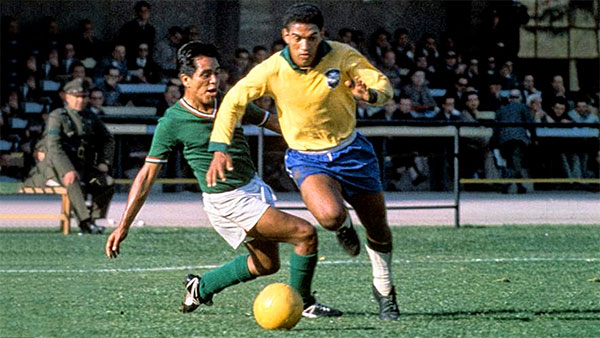♣ Dribbling
In sports, dribbling is maneuvering a ball by one player while moving in a given direction, avoiding defenders' attempts to intercept the ball. A successful dribble will bring the ball past defenders legally and create opportunities to score.
▲ Lionel Messi Dribbling
♣ Association football
In association football, a dribble is one of the most difficult ball skills to master and one of the most useful attacking moves. In typical game play, players attempt to propel the ball toward their opponents' goal through individual control of the ball, such as by dribbling (the usage of technical maneuvers). In order to go past an opponent, dribbling can involve a wide variety of manipulative tricks and feints; Ronaldinho would often employ elaborate skills and feints, such as the elastico, in order to beat defenders.
Dribbling is often invaluable especially in the third part of a pitch or at the wings, where most attacks take place. Dribbling creates space in tight situations where the dribbler is marked (closely guarded by a defender), and the dribbler can either score or create scoring chances after a successful dribble. However, dribbling, if poorly mastered and used, may result in the loss of possession either when the ball is intercepted or tackled by a defender. Some players prefer getting past players with speed and physicality, such as the winger Gareth Bale, some players go straight at opponents and look to go past them directly with a nutmeg (kicking the ball through their legs), such as Luis Suárez, whereas others may use feints, control, agility, and acceleration to evade tackles, such as Lionel Messi.
▲ Eden Hazard Dribbling
A skillful dribbler is often hard to dispossess; unsuccessful tackles (which do not reach the ball) may result in a useful free kick situation and a reprimand for the offender in the form of a penalty card. At the 2018 FIFA World Cup, Belgium playmaker Eden Hazard, renowned for being difficult to dispossess, set a World Cup record for successful dribbles completed in any World Cup game since 1966, with a 100% success rate in ten dribbles against Brazil.
Early references to dribbling come from accounts of medieval football games in England. For example, Geoffrey Chaucer offered an allusion to such ball skills in fourteenth century England. In the Canterbury Tales (written some time after 1380) he uses the following line: "rolleth under foot as doth a ball". Similarly at the end of the 15th century comes a Latin account of a football game which was played at Cawston, Nottinghamshire, England. It is included in a manuscript collection of the miracles of King Henry VI of England. Although the precise date is uncertain it certainly comes from between 1481 and 1500. This is the first account of an exclusively "kicking game" and the first description of dribbling: "[t]he game at which they had met for common recreation is called by some the foot-ball game. It is one in which young men, in country sport, propel a huge ball not by throwing it into the air but by striking it and skillfully rolling it along the ground, and that not with their hands but with their feet... kicking in opposite directions". It is known that dribbling skills were a key part of many nineteenth-century football games at English public schools with the earliest reference to ball passing coming in 1863 rules of The Football Association.

▲ Garrincha (right), Brazilian winger and 1962 World Cup star, is regarded as one of the greatest dribblers of all time.
 Premier League
Premier League La Liga
La Liga Bundesliga
Bundesliga Serie A
Serie A Ligue 1
Ligue 1 Liga Portugal
Liga Portugal Eredivisie
Eredivisie Süper Lig
Süper Lig MLS
MLS Série A
Série A J1 League
J1 League Saudi Pro League
Saudi Pro League WSL
WSL Première Ligue
Première Ligue NWSL
NWSL







 Chapter 13. football (Soccer) tactics and skills > Dribbling (association football)
Chapter 13. football (Soccer) tactics and skills > Dribbling (association football)


 •Wikipedia
•Wikipedia








